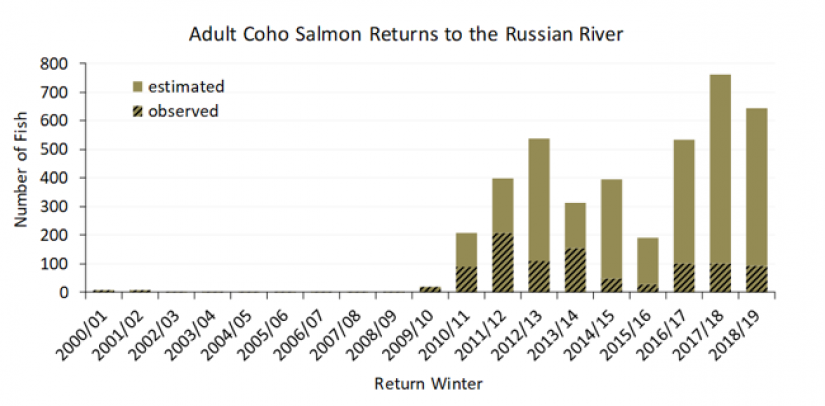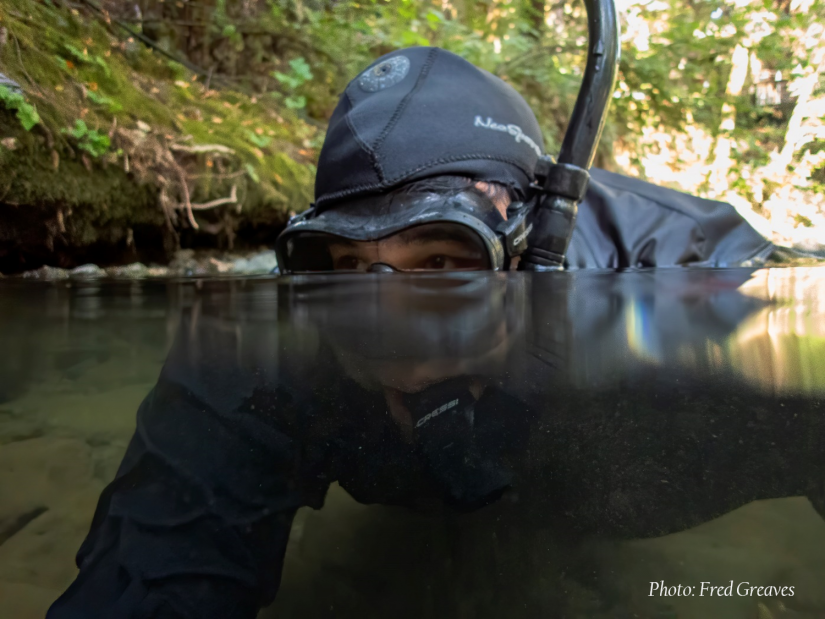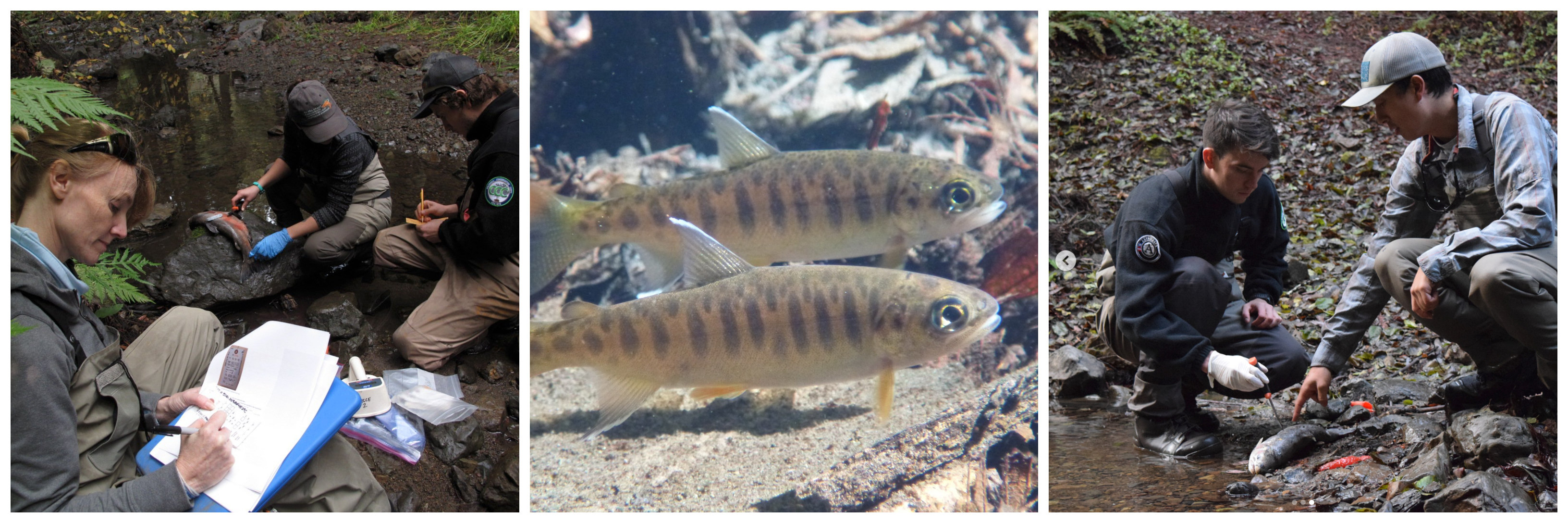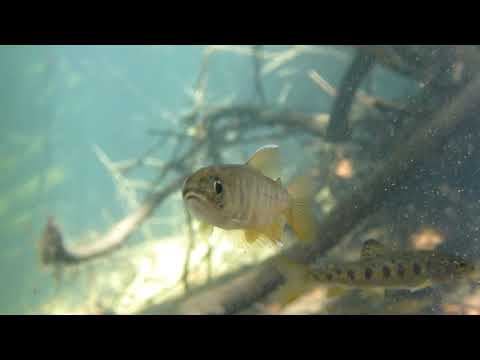For more than a decade, California Sea Grant’s Russian River Salmon and Steelhead Monitoring Program has been monitoring salmon and steelhead populations within the watershed to provide science-based information to everyone involved in the recovery of these critical native species. Our program supports the Russian River Coho Salmon Captive Broodstock Program, the statewide Coastal Monitoring Program, the Russian River Coho Water Resources Partnership, and other recovery efforts throughout the watershed.
This update provides an overview of our seasonal monitoring efforts. For complete seasonal reports, visit the Reports and Updates web page.
Adult spawner surveys
It was a wet winter for returning coho salmon. Using data from PIT tag antenna arrays throughout the watershed, we estimated that 642 hatchery adult coho salmon returned to the Russian River Basin over the 2018/19 spawner season.
We are excited to report that 85% were three-year-old fish, marking the highest estimated return of age-3 adults since monitoring began.
In collaboration with Sonoma Water, we also surveyed 53 tributaries. Coho were observed in 18 of the 32 creeks that provide suitable habitat.
It was also an exceptional year for adult steelhead—we observed steelhead spawning in 72% of the surveyed streams. Most of this occurred after the big February storm events and the late rains supported spring spawning through May.
Check out videos from the spawning season on the Russian River Salmon Monitoring Program Youtube channel.

Downstream migrant smolt trapping
We operated smolt traps in Mill Creek (Healdsburg), Willow Creek (Jenner), and Green Valley Creek (Forestville) from March to June in order to estimate coho salmon smolt abundance, migration timing, natural production, and freshwater survival and growth. We are interested in these metrics for steelhead too, but they generally out-migrate during the winter before we can safely install traps.
Our crews installed and removed traps many times around spring storms and high flows to ensure the safety of the fish. This created gaps in trap data but, fortunately, we were still able to operate our year-round PIT tag arrays.
Coho smolt abundance estimates were 1,931 in Willow Creek; 13,949 in Green Valley Creek; and 2,294 in Mill Creek. This was below the five-year average in all streams, which was likely influenced by the gaps in trapping due to high flow events. Green Valley Creek produced the largest smolts
Snorkel surveys

Snorkel surveys allow us to document the abundance and distribution of juvenile salmonids, as well as spawning success from the previous winter.
Last summer, we partnered with Sonoma Water to snorkel more than 120 miles of habitat in 43 Russian River tributaries. Wild coho salmon young-of-the-year (yoy) were seen in 22 of the 43 streams, with an expanded estimate of 4,201 total fish.
That number was significantly lower than expected, and than what we have seen in recent years, likely due to the large storm events that may have scoured out or buried fragile eggs and emergent fry.
The peak of steelhead spawning occurred after these storms and they experienced far better spawning success. The expanded count of steelhead yoy was more than double last year’s, at 79,242!
To see how many fish we counted in each stream, visit our juvenile monitoring web page.
Thank you!
This work would not be possible without the support of our partners, including public resource agencies, non-profit organizations, and hundreds of private landowners who have graciously allowed us to access the streams that flow through their properties.
Follow Us!
Experience the journey of Russian River salmonids

Videos
About California Sea Grant
NOAA’s California Sea Grant College Program funds marine research, education and outreach throughout California. Headquartered at Scripps Institution of Oceanography at the University of California San Diego, California Sea Grant is one of 34 Sea Grant programs in the National Oceanic and Atmospheric Administration (NOAA), U.S. Department of Commerce.
